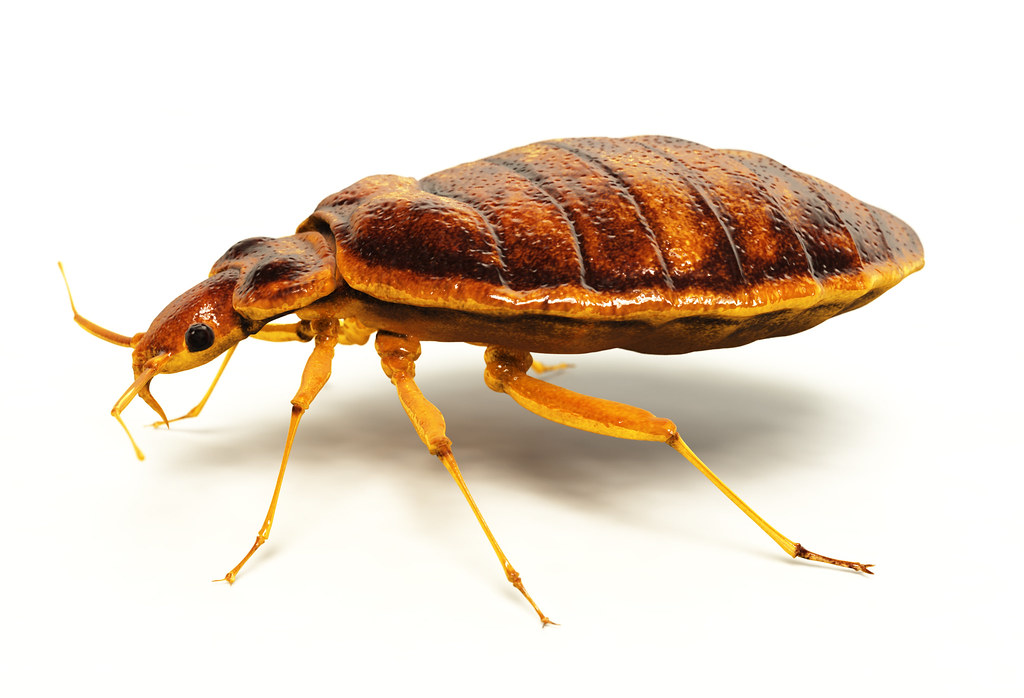Qualified Bed Bug Exterminator Near Me: DC Heat Treatment Specialists
Wiki Article
Exploring the Scientific Research Behind Bed Insect Heat Treatments as a Lasting Pest Management Technique
In the realm of bug administration, the quest for lasting and effective remedies stays a consistent quest. One such method that has actually gotten traction in recent times is making use of heat therapies to combat bed pest invasions. By taking advantage of the scientific research behind thermal death points for these persistent pests, heat treatments offer a promising alternative to conventional chemical-based techniques. The details of how warmth successfully gets rid of bed insects and the broader implications for lasting insect management techniques make this a subject worth discovering even more.Bed Insect Heat Treatment Refine

Thermal Death Point for Bed Bugs
Revealing bed bugs to raised temperatures beyond their thermal tolerance variety is crucial for attaining effective obliteration in heat therapy procedures. By reaching and keeping temperature levels over the thermal death factor for bed insects, pest management specialists can guarantee extensive removal of bed pest populaces, including hard-to-reach locations where chemical therapies may be much less reliable. Understanding the thermal fatality factor for bed bugs is necessary for carrying out effective warm treatment strategies and attaining sustainable pest management results.Advantages of Warm Treatments
Having developed the important thermal death factor for bed insects, it is necessary to now discover the significant advantages that heat therapies offer in successfully eliminating these resilient insects. When compared to conventional chemical techniques, warm therapies present several crucial advantages. Among the primary advantages is that warm can penetrate deep into holes and splits where bed bugs conceal, making certain that also the most hard-to-reach areas are heated up to dangerous temperature levels. This thorough approach not only eliminates live bugs however additionally targets bed bug eggs, protecting against future problems.Moreover, warmth therapies are safe and eco-friendly, making them a sustainable parasite monitoring technique. Unlike chemical pesticides, warm treatments do not leave harmful deposits that can posture threats to human health or the atmosphere. This element is particularly important in sensitive environments such as healthcare facilities, institutions, and residential locations where chemical usage may not be preferable.
Furthermore, warmth treatments have a high success price in removing bed insect invasions in a solitary treatment, reducing the requirement for numerous visits and reducing disruption to occupants. This effectiveness not only conserves money and time but also supplies satisfaction to those dealing with bed bug problems.
Effectiveness of Heat Treatment

Study studies have consistently shown the effectiveness of warmth treatments in achieving a high price of bed pest mortality. Appropriately conducted warmth therapies can get to all the fractures and gaps where bed pests may be nurturing, ensuring a comprehensive approach to extermination. Moreover, warm treatments have the added advantage of eliminating bed insect eggs, which are usually immune to conventional chemical treatments. Overall, the efficiency of warm therapies straight from the source in eradicating bed pest problems makes them a lasting and dependable parasite management approach.
Sustainable Insect Monitoring Perks
Implementing sustainable bug management methods offers long-lasting advantages for both the environment and public health. By making use of methods such as warmth treatments for parasite control, we can reduce the dependence on harmful chemical pesticides that can have adverse results on environments and human health and wellness - bed bug heat treatment. Sustainable bug monitoring strategies aid in preserving biodiversity by targeting certain insects without harming non-target organisms, thus maintaining a well balanced ecological community
In addition, lasting insect management techniques add to the general wellness and health of the general public. By decreasing exposure to hazardous chemicals used in typical pest control techniques, warm therapies give a safer choice for insect administration in residential, industrial, and public areas. This decrease in chemical usage also assists in avoiding chemical residues from contaminating water, air, and dirt, guarding environmental top quality.
Conclusion
To conclude, bed bug warmth treatments have actually been shown look at this site to be a reliable and sustainable insect administration approach. The thermal death factor for bed insects makes them at risk to warm treatments, which have countless benefits over conventional chemical treatments. The effectiveness of warmth treatments in removing bed bug problems while decreasing environmental impact highlights the potential of this approach as a lasting remedy for insect control.The bed bug heat therapy process involves raising the temperature within infested areas to a degree that successfully eliminates bed bugs and their eggs. By getting to and preserving temperatures over the thermal fatality factor for bed insects, pest management professionals can guarantee thorough elimination of bed pest populaces, including hard-to-reach locations where chemical therapies might be less effective. One of the key benefits is that heat can permeate deep right into crevices and cracks where bed pests hide, guaranteeing that even the most hard-to-reach areas are warmed to lethal temperature levels. Unlike chemical treatments that may leave behind resistant populations, warm treatments use a ecologically pleasant and safe option that can pass through deep right into furniture, walls, and other hard-to-reach areas where bed insects conceal.
The thermal fatality point for bed bugs makes them susceptible to heat therapies, which have numerous advantages over traditional chemical treatments.
Report this wiki page